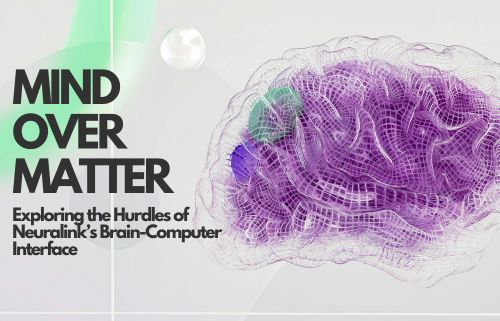The setback experienced by Neuralink with its brain implant underscores the complexities involved in merging cutting-edge technology with the delicate mechanisms of the human brain. This incident not only highlights the challenges inherent in designing and implementing such revolutionary devices, but also prompts a critical examination of the trade-offs between innovation and reliability.
Elon Musk’s brain-computer interface startup with its pioneering brain implant encountered mechanical issues shortly after installation in its first human participant. The implant, designed to decode neural signals for paralyzed individuals to control devices with their thoughts, experienced thread retraction from the brain, leading to a decline in performance. While Neuralink’s innovative design holds promise, the incident underscores the challenges of merging advanced technology with the intricacies of the human brain and highlights the critical need for reliability in medical device development.
Neuralink’s pioneering design, featuring a coin-sized puck housing a multitude of electrodes, promised a leap forward in brain-computer interface technology. However, the recent malfunction, wherein some of the implant's threads retracted from the brain, reveals a crucial flaw in the design's execution. The absence of a detailed explanation from Neuralink regarding the cause of this issue leaves room for speculation, with experts suggesting potential complications arising from the device's interaction with the brain's natural movements.
Comparisons with existing technologies, such as the Utah array, shed light on alternative approaches to brain-computer interfaces. While Neuralink’s wireless implant offers unprecedented capabilities with its extensive electrode count, the incident underscores the importance of reliability in medical devices. Paradromics and Synchron, drawing inspiration from prior medical innovations, have pursued wireless designs with promising results, raising questions about the balance between innovation and proven methodologies.
The significance of reliability becomes particularly pronounced when considering the impact on individuals like Noland Arbaugh, whose quality of life hinges on the functionality of such implants. Despite the setback, Arbaugh’s testimony underscores the transformative potential of Neuralink’s technology, emphasizing the imperative for continued development in the field of brain-computer interfaces.
Neuralink’s response to the setback, including modifications to enhance performance and user experience, reflects a commitment to addressing challenges and advancing the technology. However, this incident serves as a reminder of the iterative nature of innovation, wherein setbacks are inevitable but serve as opportunities for learning and improvement.
As the pursuit of commercializing brain-computer interfaces progresses, it is imperative for companies like Neuralink to prioritize not only innovation, but also the long-term reliability and safety of their devices. By fostering transparency, collaboration, and a steadfast commitment to addressing challenges, the vision of seamlessly interfacing with the human brain can be realized while ensuring the highest standards of efficacy and safety.
Photo Courtesy of Google Deep Mind




















































































































































































































































































































































































































































































































































































































































































































































































































